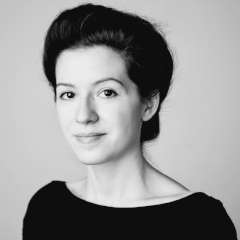Billed as “The soundtrack of the 20th century”, The Rest is Noise season of 2013 has now commenced at the Southbank Centre. Concert programmes scheduled throughout January have focused on the Second Viennese School and its infamous break with western tonality. However, for those bewitched by the descent of music history into an atonal abyss, Thursday’s concert at the Queen Elizabeth Hall offered a refreshing take on the narrative we are apparently so well acquainted with. Rather than a simulation of this cultural horror story, the selection of Viennese repertoire performed by soprano Barbara Hannigan, pianist Reinbert de Leeuw and Quatuor Diotima afforded snapshots of a sophisticated culture brimming with creativity.
“The early works of Schoenberg always come as a pleasant shock to listeners expecting a gruelling atonal exercise”, Alex Ross remarks in his book The Rest is Noise (the critical study that was the inspiration for this festival). Indeed, the composer whose name sparks terror in the hearts of many music enthusiasts believed himself to be a part of the same tradition as Beethoven. In programming Lieder by Arnold Schoenberg, Alma Mahler and Alban Berg, together with Schoenberg’s String Quartet no. 2 (1907–08), the festival successfully resisted the temptation to patronise the music of this era via a crude showcasing of the exclusively provocative. Sensitive and erudite performances by the aforementioned artists ensured that points of connection with the Viennese music traditions were elucidated.
That the programme notes for Alma Mahler’s Four Songs (1901–11) were loaded with condemnations of her husband’s domestic dictatorship was of course regrettable. Her decision to submit to the famous composer’s way of life and terminate her own creative endeavours is still a subject that requires deep consideration, as her own letters would seem to indicate. To their credit, Barbara Hannigan and Reinbert de Leeuw gave an astonishingly rich performance of four vocal compositions that are in places somewhat obtuse and artistically confused. While inventive features were present in Alma’s writing – notably the volleying of dissonant passing notes between piano and voice – these were rarely developed with any consistency. Flanked by the distilled aesthetic visions of Schoenberg and Berg, such imperfections were noticeable. However, the overarching attitude of historical curatorship that colours The Rest is Noise festival certainly enabled a sympathetic space within which these compositional efforts could be appreciated. Furthermore, the importance of the Mahler family in Viennese music circles was an aspect brought to the fore.
Schoenberg’s Four Songs (1899) and Berg’s Seven Early Songs (1905–08) enjoyed a fine delivery by Hannigan and de Leeuw. Central to this was the singer’s extraordinary command of quiet vocal projection and her subtle allusions to the Sprechgesang (“speech singing”) style of Schoenberg’s later masterpiece Pierrot Lunaire (1912). De Leeuw’s piano accompaniment was intensely fragile, conjuring a number of peripheral associations with Claude Debussy’s sensuous musical language during Schoenberg’s Four Songs. A glass house of quivering sound and harmonic disquiet was established in the first song, Erwartung, with the soprano eventually exclaiming “ein Fenster tut sich auf” (“a window opens”). Berg’s Seven Early Songs equally pressed for exploration, the composer harnessing his personal influences – Brahms, Strauss, Mahler and Wagner – and propelling them into an intricate dialogue. The programme claims Vienna was the musical “nerve-centre” of Europe: if we put our ear to the stethoscope we can hear this music beating with an apprehensive pulse.
Despite Gillian Moore’s attempts to characterise Schoenberg’s String Quartet no. 2 as an arcane thunderbolt in her second pre-performance talk, Quatuor Diotima and Hannigan succeeded in fostering connections with both the Vienna of Mozart and Beethoven and its fin de siècle counterculture. To understand Schoenberg’s addition of a soprano to the string quartet as “shocking” is a viewpoint that I feel bypasses the real nature of this artistic offering. What came across in the performance was not any such incursion but rather a deft drawing-out of themes already latent in the classical string quartet genre. In allowing the soprano to join the third and fourth movements, Schoenberg was appealing to the quartets of Viennese masters before him: quartets in which slow movements frequently assumed lyrical poise and finales often imported gestural language from dramatic genres such as opera.
A captivating performance by Quatuor Diotima unveiled such vocal content. The first two movements were rendered with skittish agitation and a lack of positive contact between bow and string that was conversely frightening and thrilling. However, with Hannigan’s entry in the third movement the ghostly chattering blossomed into multifarious effects, penetrating sound and glistening pinpricks of dissonance. As the soprano line disintegrated into soft cries – “Ich bin ein dröhnen nur der heiligen stimme” (“I am only a whisper of the holy voice”) – the notes found rest in a pure F sharp major triad. The string quartet genre had not been maimed: to some extent it had been fulfilled.
Contributing to an effective first month for The Rest is Noise, this performance was alive with ideas and inquisitive investigation. Barbara Hannigan’s appearance in Berg’s Lulu Suite with Vladimir Jurowski and the London Philharmonic Orchestra (27 April, 2013) should be hotly anticipated.


